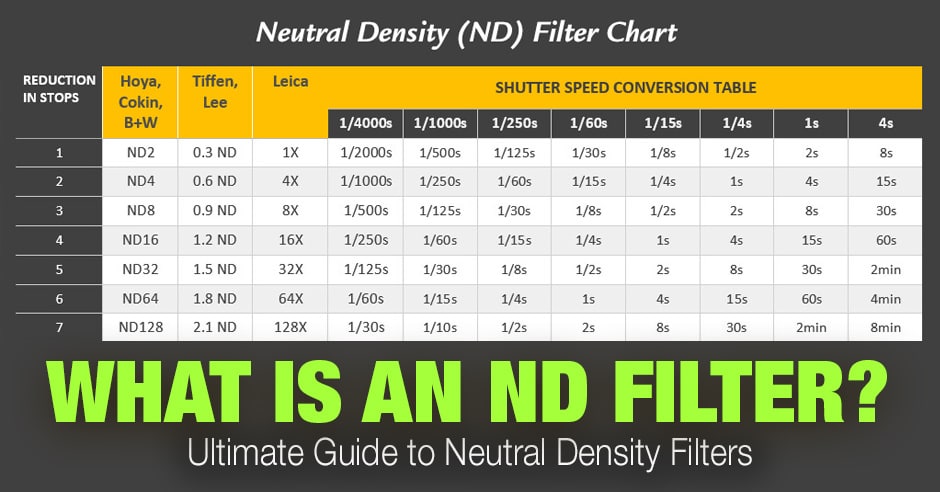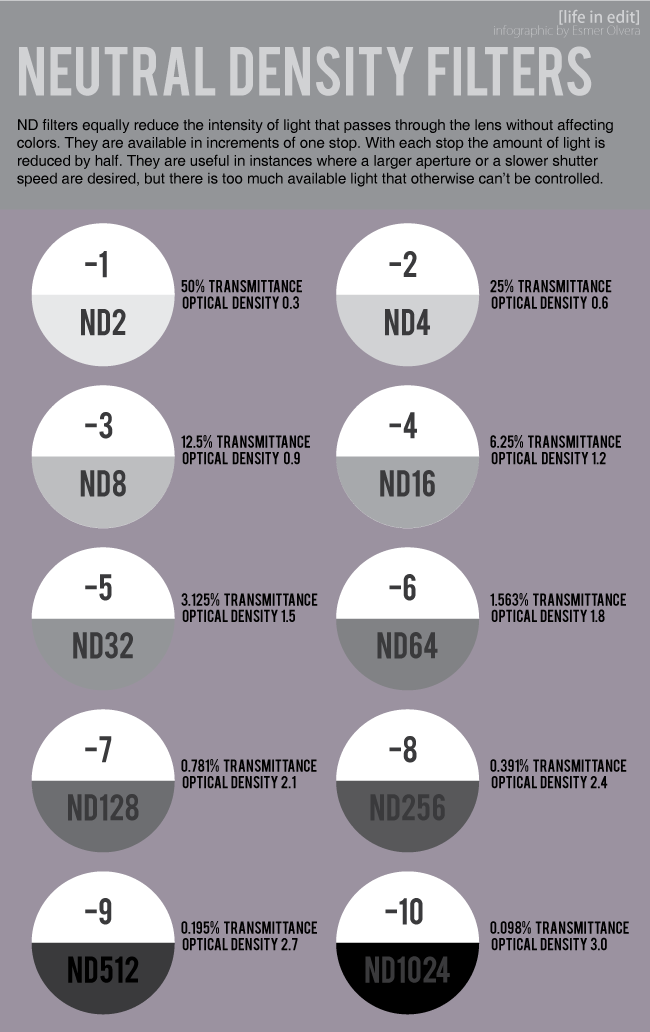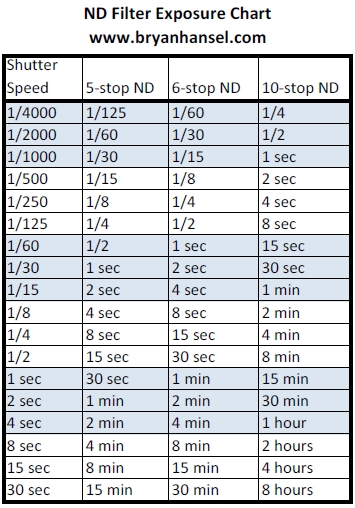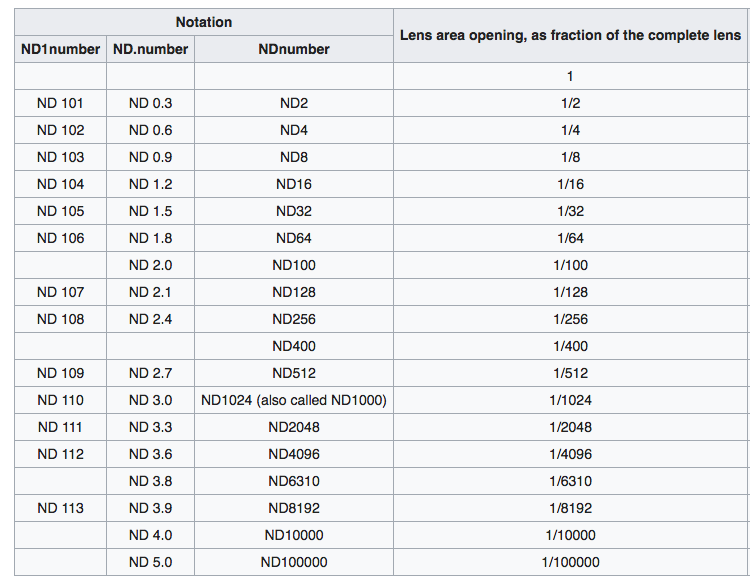Neutral Density Filter Chart
Neutral Density Filter Chart. A neutral density filter lets you change the amount of exposure in your photo. Variable Neutral Density Filter (VND) — The VND filter gives the photographer the ability to "dial in" the amount of filtration by turning the outer ring of a dual-ring filter.

Neutral density filters block light evenly across the frame.
Even stacking shots, a technique to try to simulate long exposure, always presents.
For example, a one-stop ND filter would let in ½ as much light. The disadvantage of these filters is that you might get varying degrees of filtering in one image since you have to "dial in" the exposure you want. The advantage of VND filters is the ability to carry just one nd filter with you.
Rating: 100% based on 788 ratings. 5 user reviews.
Randy Hewes
Thank you for reading this blog. If you have any query or suggestion please free leave a comment below.






0 Response to "Neutral Density Filter Chart"
Post a Comment